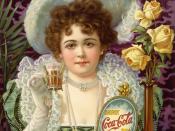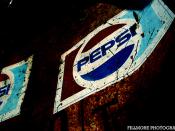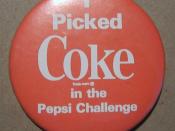The Coca-Cola versus Pepsi competition is perhaps the most well known rivalry in the history of marketing. Coke has long enjoyed the home field advantage, having become entrenched as the most popular and identifiable cola throughout the world. Although it has carved itself a substantial portion of the market, Pepsi has struggled to match the sales revenue of Coca-Cola; until recently. Although Pepsi has never come close to equaling Coke cola market share, they have become more aggressive and adept than Coke in cornering the non-carbonated beverage market. It is in this market that Pepsi is seeking to obtain a sustainable competitive advantage over Coke. It their quest to acquire and develop new products, will the use of the PTSTP method help Pepsi develop new products in order to obtain a sustainable competitive advantage?A product is defined in three levels; core, actual, and augmented. The core of the product is the benefit it offers the consumer.
For the example of colas, it could be refreshment, energy (sugar and caffeine), alertness, or just pleasure. The soda itself is the actual product. The augmented product for a cola could be the recognition and status gains perceived by drinking that particular brand. Or it could even be the weight loss from sticking to diet colas.
For the development of new products, we first need to identify what consists of a new product. There are six categories of new products:1.New-To-The-World. This is a product that has no like product offered elsewhere. For example, when the first personal computer was offered to the public, this would be a new product.
2. New Product Lines. This is when similar products exist, possibly even under the same brand, but a new line of the product offers some tangible difference to those products already offered. For example,


